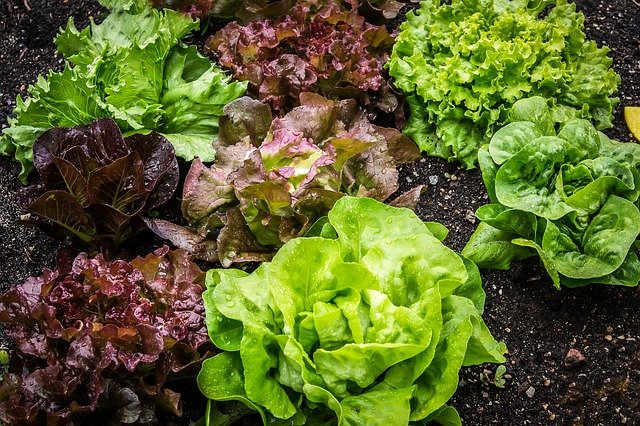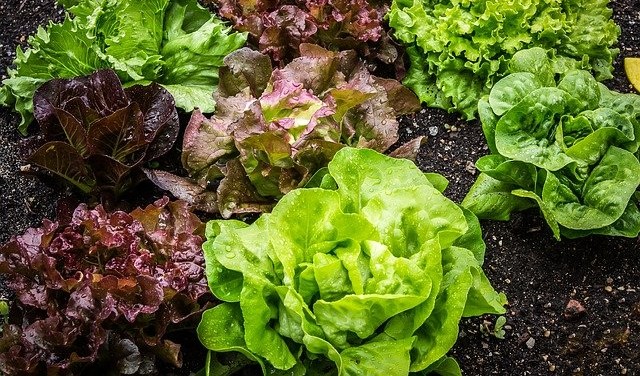
How many different types of lettuce can you name? Which type of lettuce has the most nutrition? The least? You may be surprised!
All types of lettuce are largely water, ranging 84-96% water by weight. All are low in calories, with 4-10 calories per cup. No lettuce contains fat or cholesterol. Each type has <1 to 2 grams carbohydrate and 0.3 to 1.6 grams fiber per cup. All types of lettuce are naturally low in sodium, containing 20g or less sodium per cup – except for spinach (24g sodium per cup) and chard (77mg sodium per cup).
Most vegetables, including lettuce, are low in protein. No type of lettuce contains more than 2 grams of protein per cup.
The most nutrient-dense type of lettuce is spinach: it has 4.5% DV* for iron, 5.7 %DV for magnesium, 14.5 %DV folate, 15.6 %DV vitamin A, 9.3 %DV vitamin C, 120.8 %DV vitamin K.
Health benefits of regularly including lettuce in your food choices:
Eating salads that contain a variety of types of lettuce is associated with several health benefits, including higher nutrient intake, consuming fewer calories, and slower cognitive decline associated with aging.
A 24-hour food recall of over 9,000 adults age 20 years and older between 2011 and 2014 showed that people who ate salad had higher intakes of fiber, total fat, unsaturated fatty acids, vitamins A, B-6, C, E, K, folate, choline, magnesium, potassium, and sodium than people who did not include a salad that day.
A small study with 46 women showed that including a salad either with the meal, or right before the meal as a first course, reduced the amount of total calories consumed at that meal by 11% and also increased daily vegetable consumption by 23%.
A prospective study of over 900 participants age 58-99 years in the Memory and Aging Project showed that consuming 1 serving of green leafy vegetables each day decreased cognitive decline to the equivalent of being 11 years younger.
What are the major nutrients in lettuce?
Vitamin A: A fat-soluble vitamin involved in immune function, cellular communication, growth and development, and male and female reproduction. Vitamin A supports cell growth and differentiation, playing a critical role in the normal formation and maintenance of the heart, lungs, eyes, and other organs. Vitamin A is also critical for vision. The %DV is 900 mcg RAE.
Vitamin K: A fat-soluble vitamin present primarily in green leafy vegetables. Vitamin K is required for blot to clot normally. It can have serious and potentially dangerous interaction with anticoagulants such as warfarin (Coumadin®) and people on this medication are usually advised to maintain a consistent daily intake of leafy green vegetables that are the primary source of Vitamin K. The %DV is 120 mcg.
Folate: A water-soluble vitamin important in RNA and DNA production and metabolism of several amino acids. Groups of people potentially at risk for not consuming enough folate include people with alcohol use disorder and pregnant women. The %DV is 400 mcg DFE.
Lutein and zeaxanthin: The predominant class of antioxidants called carotenoids which accumulate in the retina of the eye. There is much research on the role these antioxidants play in preventing and/or slowing the progression of age-related macular degeneration (AMD), the leading cause of blindness in older adults.
Take an in-depth look at the many types of lettuce, along with fun ways to incorporate it into your eating pattern, in the post The 12 Types of Lettuce.
By Lynn Grieger, RDN, CDCES, CPT, CWHC
Copyright foodandhealth.com, reprinted with permission

